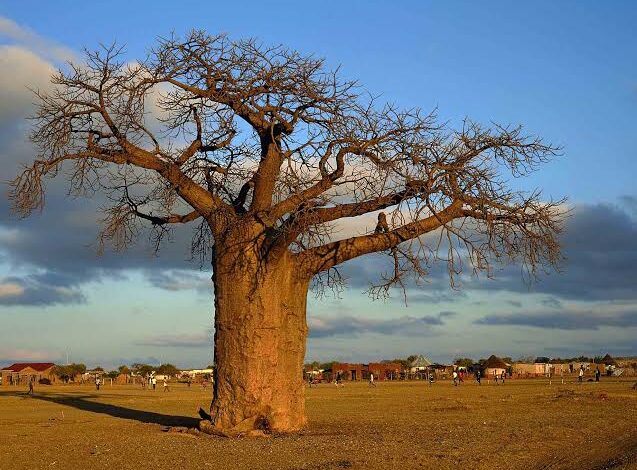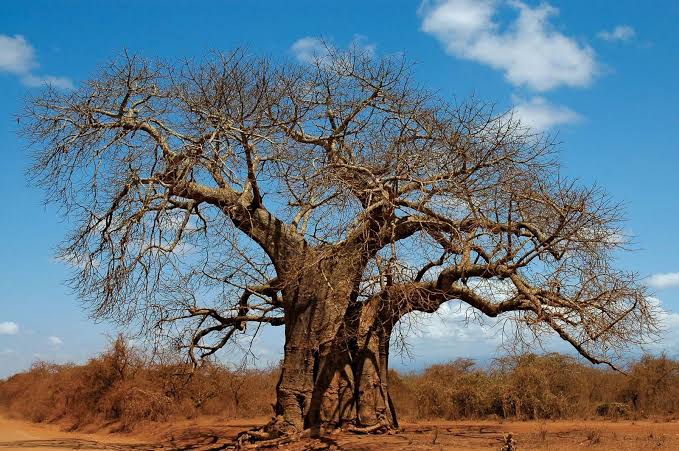Here are Africa’s ancient baobab trees that have lived for over 6000 years
Further research has revealed that the bark of these trees is processed into textiles and rope, the leaves are edible once cooked, the pulp creates paper and other supplies, the sap is used for glue and soap, and the fruit is also edible.

In the heart of Africa’s vast landscapes stand towering sentinels of time – the ancient baobab trees.
These majestic giants, some believed to be over 6,000 years old, have borne witness to the continent’s rich tapestry of history and culture. From the savannas of the Serengeti to the deserts of the Kalahari, these iconic trees have long captured the imagination of travelers and scientists alike.
Last year, Laura Kiniry, an award-winning journalist specializing in nature, travel, and the outdoors, revealed that Baobabs can grow up to 100 feet tall, have a circumference of as much as 165 feet, and live as long as 3,000 years.
She said these solitary trees are also incredibly resilient, thriving in dry, open areas such as the savannas of southern Africa and western Madagascar, and surviving by storing water in their massive trunks.
“Their thick bark protects them from bushfires, while their massive root systems help slow soil erosion and aid in the recycling of nutrients. Baobabs may depend on pollinators like fruit bats and bush babies to reproduce, but the trees themselves are incredibly regenerative. They can even create new bark when needed, healing wounds that would take other trees down,” she writes.
They are not just trees bearing branches and leaves. Kiniry noted that these bare fruits, which are in the form of a woody round or egg-shaped pod, can grow up to a foot long and hang from the tree’s branches courtesy of a long, thick stalk.
Explaining the importance of these trees, Alika Africa, a tourism company in Tanzania stressed that these are a vital part of East Africa’s ecosystem, and such, the cultural history of its people.
“The trees provide resources for both wildlife and human use; they can store more than 1100 gallons of water in their trunks to survive dry conditions. Humans also use practically every part of the tree,” writes Alika.
Further research has revealed that the bark of these trees is processed into textiles and rope, the leaves are edible once cooked, the pulp creates paper and other supplies, the sap is used for glue and soap, and the fruit is also edible.

When about 20 years old, baobabs finally start to produce large, white flowers that open later in the afternoon for one night only, with a pungent odor that attracts bats and bugs.
In South Africa’s Kruger National Park where some of these trees are found, authorities stressed that an old Baobab tree can create its ecosystem, as it supports the life of countless creatures, from the largest of mammals to the thousands of tiny creatures scurrying in and out of its crevices.
Kruger National Park writes that Birds’ nests benefit from the branches of these trees; baboons devour the fruit; bush babies and fruit bats drink the nectar and pollinate the tree’s flowers, and elephants have been known to chop down and consume a whole tree.
Where do Baobab trees grow?
Baobabs are widely distributed in belts across Africa. They also grow in Madagascar, India, Ceylon and Australia. They grow in many areas of Zimbabwe. In the Northern Province, they are found between the Limpopo and the Zoutpansberg range.
Messina is indeed a Baobab town. There is a famous `halfway Baobab’ between Louis Trichardt and Messina, a reservoir from which many have drawn. Baobabs seem to prefer hot, sandy plains







